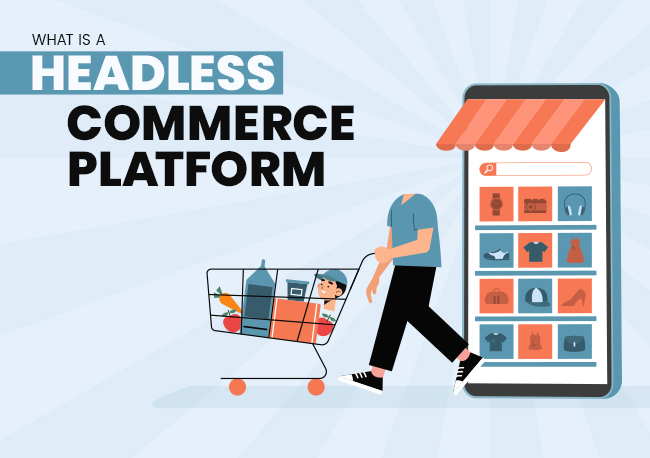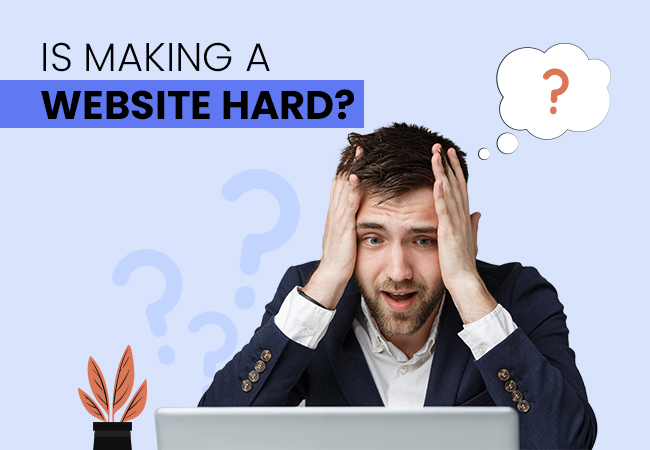| Getting your Trinity Audio player ready... |
In the digital age, along with content, visuals are king. This is especially true for eCommerce websites, where the right images can make the difference between a sale and a pass.
Remember that in the wide digital marketplace, your eCommerce website is more than just a platform for transactions; it’s a virtual store inviting customers into your world. The images you choose are the silent salespeople and the storytellers of your brand’s narrative. They enhance product understanding and build trust.
High-quality visuals significantly impact user experience and search engine rankings. Optimizing images for SEO, with relevant alt text and captions, is essential for better visibility on search engines like Google. In the competitive eCommerce landscape, investing in appealing, high-quality images is key to standing out and driving organic traffic and conversions.
In this guide, we will walk you through everything you need to know about sourcing high-quality images that will make your products shine.
Before discussing sourcing the images for your eCommerce website, let’s learn the importance of high-quality product images in detail!
Importance of High-Quality Product Images
➢ First Impressions Matter
It’s like meeting someone for the first time!
You want to look your best, right?
For products, their ‘best look’ comes from high-quality images.
When potential customers land on your eCommerce website, they first notice your product images. These images serve as the customer’s initial point of contact with your products. High-quality images on the website instantly convey professionalism, trustworthiness, and the overall quality of your brand.
Also Read: Brand Strategy Vs Marketing Strategy – Know The Difference
➢ Customers Want to See Product Images
When you can’t touch or feel the product while shopping for yourself, the next best thing is to see it. People like to look at what they are thinking of buying and rely heavily on visuals to make decisions. It helps them imagine owning it and how it fits into their lives.
The Detailed product shots from various angles allow your customers to inspect the product closely, helping them feel more confident about their purchase decision, ultimately resulting in more conversions.
For instance, if you’re running an Etsy dropshipping store selling custom clothing items, shoppers wouldn’t just want to see the design – they‘d expect to see how it looks on real models, with a closer look at the fabric texture. This ensures their trust in the product quality, ultimately driving sales.
Also Read: Types Of eCommerce Websites And Models
➢ It Builds Trust
Good images on your eCommerce website show that you are not hiding anything. It’s like saying, ‘Look, we’re proud of our product, and here it is in all its glory.’ This makes people trust you more because they feel more confident in the authenticity of your offerings.
This is why investing in professional-grade product photography is important, as it signals to customers that you take your business seriously and prioritize their satisfaction.
Also Read: What Makes A Good Website Checklist? A Complete Guide
➢ Enhances Credibility
By keeping High-quality images on your eCommerce store, It make your website look professional. It’s like wearing a suit to a job interview instead of shorts and flip-flops. They create a positive perception of your brand, which results in an increase in trust and credibility.
By keeping high-quality imagery across your website, it reinforces your brand identity and creates a cohesive brand image.
Also Read: Important Things Business Websites Should Have
➢ Reduced Returns
One of the biggest challenges in eCommerce business is tackling returns due to the difference between expectations and reality.
High-quality images give your users an accurate representation of your products, reducing the likelihood of disappointment upon receipt. When people know what they’re buying, they’re less likely to return it return items, which saves you time and money.
➢ It Boosts SEO Efforts
Search engines value high-quality content, including images!
SEO is like the internet’s way of finding the best answer to your questions. When your product images are named and tagged correctly, search engines like Google can better understand what you are selling and show your products to more people looking for something like that.
Optimizing your product images with descriptive file names, alt tags, and relevant keywords can improve your eCommerce website’s SEO visibility in search engine results.
Also Read: Difference Between On-Page And Off-Page SEO?
Understand the Types of Product Images
Let’s find out the two main types of product images for eCommerce websites:
1. Primary Product Images
This is the main image that represents the product on the product listing page of your eCommerce website. It’s like the main star of the show. This is the first image a shopper sees when browsing through your store. It’s like the cover of a book or a movie poster. It gives you a quick idea of what the product is all about.
For example, if you are looking for a shirt, the primary image would show the shirt from the front to see its colour, style, and design.
2. Secondary Product Images
Secondary product images are like the supporting actors of your eCommerce website. It offers more details about the product.
For example, If we are discussing purchasing a shirt, the images could show the shirt from different angles, the back or the sides of a shirt. Your user could also zoom in to show you the fabric’s texture or any special features the shirt might have, like buttons or pockets.
In short, the primary image is like the big picture, giving your customer an overall idea about the product, while secondary images dive deeper into the details, helping your customer make a more informed decision.
Together, they make your customer’s online shopping experience easier and more enjoyable!
Also Read: Will eCommerce Dominate Physical Stores – What’s The Future?
How Can You Get Images For Your eCommerce Business Website?
1. Get Free Stock Images
When you want to source images for your eCommerce website without breaking the bank, free stock image websites are a go-to solution. You can get pictures from special websites that offer them for free. It’s the same as borrowing a book from a library without paying for it.
Some of the few websites available for free stock images are as follows:
➔ Freepik: Freepik is one of the best websites specialising in vector graphics and illustrations for your eCommerce website. It offers free and premium content for commercial use.
➔ Unsplash: Another amazing website is Unsplash, which offers a vast collection of high-resolution images from professional photographers worldwide.
➔ Pexels: Pexels is also the most useful website for high-quality images and videos, all available under the Creative Commons Zero (CC0) license.
➔ Pixabay: A popular website, Pixabay offers over 1.9 million free images, vectors, and illustrations, available for free & under various licenses.
It is important to know that free stock images typically come with licenses that dictate how you can use them. Below, we will discuss the common types of licenses.
Some Common types of licenses include:
➢ Creative Commons Zero (CC0): In this type of license, images are released into the public domain, which means that you can use them for any purpose, including commercial use, without attribution.
➢ Creative Commons Attribution (CC BY): In this license type, you can use the images for commercial purposes, but it is compulsory that you give appropriate credit to the creator.
➢ Creative Commons Attribution-NonCommercial (CC BY-NC): In this license type, you can use the images for non-commercial purposes only, with attribution.
What’s the benefit of using free stock images?
➔ It’s cost-effective: The best part of using stock images is that you don’t need to spend money to get these pictures.
➔ Fully Convenient: With such websites, you can find a wide range of amazing images without much hassle.
➔ Offers Legal Safety: The images taken from such websites come with permission to use them, ensuring you won’t get into trouble ever using them on your website.
Well, that’s impressive, right?
There are limitations to using such images, too.
Let’s find out!
Limitations of using free stock images
➢ You have limited exclusivity: The main limitation of using free stock images is that they are freely available to anyone, so there is a complete chance that they may lack the uniqueness and exclusivity of custom photography on your eCommerce website.
➢ Quality Variability: You get a bunch of free stock image websites that offer high-quality images, but you can face the issue of consistency and resolution, which may vary when you compare them with the premium stock photo libraries.
What are the software options for editing & enhancements?
Once you have downloaded free stock images from the website, you may need to edit or enhance them to fit your eCommerce website’s theme perfectly. Some of the popular software options for editing and enhancements are:
➔ Adobe Photoshop: Adobe Photoshop is the most powerful tool in the world of graphic designing best for image editing, enhancing and designing.
➔ GIMP (GNU Image Manipulation Program): GIMP is a free and open-source alternative to Photoshop that offers you similar features for image editing and retouching.
➔ Canva: If you are not a Photoshop expert, Canva can be your best online platform, offering easy-to-use design tools for creating graphics for your eCommerce website product images.
Also Read: 10 Ways To Secure Your eCommerce Website
2. Getting Photos Directly from Manufacturers
If you are not producing the product yourself, getting images directly from manufacturers for your eCommerce website can be a beneficial strategy for showcasing your products in the best light possible, as they have marketing materials, including images, readily available for retailers to use.
You can contact the manufacturer of the products to obtain high-quality images for your eCommerce website or visit their website, where they showcase their products. You need to browse their entire website to check if they provide images you can use. Just Look for a section dedicated to media or downloads, where you can find product images for retailers or distributors.
Also Read: Why Do You Need To Be Careful About Monitoring Competitors?
3. In-House Product Photography
Investing in in-house product photography can offer exceptional results when you have a good budget for getting images for an eCommerce website.
For this, you need to hire a professional photographer and invest in certain equipment & tools.
Requirement of Equipment & Tools
➢ Camera: You must invest in a high-quality DSLR or mirrorless camera to capture perfect images for your eCommerce website. You have to look for one with a good sensor, high resolution, and manual settings for optimal control over the shots.
➢ Lenses: Investing in versatile lenses like a 50mm prime lens or a macro lens can capture the products with clarity and detail for your eCommerce website.
➢ Tripod: You need a sturdy tripod to keep your camera steady and ensure consistent framing and focus across your product shots.
➢ Lighting: While natural light can really work well for your product photoshoot of an eCommerce website but investing in studio lighting equipment offers you more control over your lighting setup.
By setting up the right equipment and tools, you can produce professional-quality product images on your eCommerce website that showcase your offerings in the best possible light. With attention to detail and a focus on quality, in-house product photography can elevate your eCommerce website and drive sales.
4. Do It Yourself (DIY) Photography
DIY photography can be a great option if you are on a tight budget. For this, you don’t need expensive equipment to get started. A smartphone with a good camera, natural lighting, and a simple backdrop can work wonders for sourcing images for your eCommerce website.
You just need a tripod to stabilize your phone for clear and consistent shots in the best natural light. If necessary, edit your photos for lighting, colour, and size consistency.
Also Read: What Is A Headless Commerce Platform – A Complete Guide
Factors That Improving Product Images For Your eCommerce Website
➢ Provide from All Necessary Angles
Imagine you are showing your friend your new watch.
You wouldn’t just show them the front, right?
You had to show them the sides, the back, and maybe even the cool design on the strap.
You have to do the same with your product images for your eCommerce website so that your customers get a comprehensive understanding of your product by showcasing it from multiple angles. This allows them to visualize the product more accurately and reduces the likelihood of surprises upon delivery.
➢ Show Different Colors and Styles
If your product comes in different colours or patterns, show images of each one. For example, if you sell shoes on your website, your customers might want to see what they look like in black and brown. This will help them make informed decisions and choose the option that best suits their preferences.
➢ Keep Your Branding Consistent
Think of your product images as your signature style. You need to ensure that they align with your brand’s theme and messaging. You need to use the same fonts, colours, and logo placement so people can immediately recognise your brand.
➢ Focus on Clarity
Nobody likes blurry pictures, right?
You need to ensure that images on your eCommerce website are sharp and easy to see. Clear, crisp images give customers a better understanding of the product’s quality and features, which increases their confidence in purchasing.
➢ Size Matters
Just like shoes come in different sizes, your images must fit on different platforms. This is because different platforms have specific requirements for image size and aspect ratio. You need to resize your images accordingly, which ensures they look their best on all platforms, including computers, phones, and tablets.
➢ Implement a Zoom-In Feature
A zoom-in feature on your eCommerce website allows customers to get a closer look by enlarging the image. This is particularly important for products where texture and material details are a selling point. It properly offers the experience of examining a product up close.
➢ Optimize Images for Website Performance
Optimizing Images is really important for enhanced website performance!
You need to optimize your images to load your website faster so people can start shopping sooner. You also need to use the appropriate file format, such as JPEG or PNG, and compression techniques to reduce file size without compromising quality.
Also Read: Website Optimization Tips To Increase Website Performance
➢ Implement the Basics of Image SEO
Just like you use keywords to find things on the Internet, make sure your images are searchable.
To do this, you need to enhance your image SEO!
Add descriptive names and tags so people can easily find your products.
It involves using descriptive, keyword-rich file names, adding alt text to each image, and ensuring your images are mobile-friendly so search engines can understand and rank your content & people can easily find your products.
Also Read: A Complete SEO Strategy Guide For New Websites
Conclusion
Finding and using the right images for your eCommerce website doesn’t have to be complicated. Whether you are opting to take photos yourself, hirung a professional, use stock photos, or create custom graphics, the most important aspect is ensuring that your images represent your products and brand in the best light possible.
Just remember that with high-quality images, your eCommerce website will not only attract more visitors but also convert those visitors into customers.




